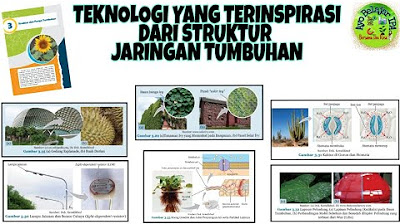Skin Inspired Electronics: Changing the Future of Electronics with Zhenan Bao
Summary
TLDRThe speaker discusses the development of skin-inspired electronics in their lab, aiming to mimic the human skin's sensing capabilities for health monitoring. They highlight the need for flexible, biocompatible devices that can provide continuous health data without discomfort. The lab's breakthroughs include creating soft, conductive materials that can stretch, self-heal, and degrade, leading to innovative applications like wearable sensors for health monitoring and flexible displays.
Takeaways
- 🧪 The speaker is developing 'skin-inspired electronics' in their lab to mimic human skin's sensing capabilities.
- 🧠 The goal is to create electronics that can interface with humans in a more natural way, potentially improving health monitoring.
- 🔍 Current medical devices are often rigid, bulky, and not compatible with the human body, which limits their utility.
- 🚀 The aspiration is to move from precision medicine to precision health, aiming to detect health issues before they become critical.
- 🔎 There's a need to understand how different signals and information at a cellular level impact human health.
- 📊 The challenge is to create electronics that can measure information at a high resolution over a large area without disrupting daily life.
- 🌐 The envisioned electronics should be comfortable, invisible, biocompatible, and able to measure information autonomously.
- 🔬 As a chemist, the speaker is focused on creating new materials that are soft yet have the electronic properties of integrated circuits.
- 🔄 A significant discovery allows the creation of molecules that conduct electricity effectively and are also stretchable and self-healing.
- 📱 The new materials enable the development of electronic devices like sensors that can be sprayed directly onto the skin and are biodegradable.
- 💡 The research is progressing towards creating wearables for mental health monitoring and sensors that can measure dopamine in both the brain and intestine.
Q & A
What is the primary goal of developing skin-inspired electronics?
-The primary goal is to mimic the sensing capabilities of human skin using electronics, which can potentially change how humans interface with electronics and allow for better health monitoring.
How does the complexity of human skin influence the development of skin-inspired electronics?
-The complexity of human skin, which is capable of sensing and sending information to the brain, is what researchers aim to replicate in their electronics. This complexity drives the need for advanced materials and engineering solutions.
What are the limitations of current medical devices according to the speaker?
-Current medical devices are either not providing enough information or are not compatible with the human body due to their rigid and bulky nature, making them difficult for broad use in health monitoring.
What is the difference between precision medicine and precision health as mentioned in the script?
-Precision medicine focuses on personalized treatment after disease discovery, while precision health aims to monitor health continuously to discover and address potential issues before they become serious, similar to detecting issues in airplane engines before catastrophic failure.
Why is there a need to understand the various signals and information that govern human health?
-Understanding these signals and information is crucial for developing a comprehensive view of health at the cellular level, which can lead to more effective health monitoring and preventive measures.
What are the challenges in creating electronics that can measure information at a high resolution over a large area without interrupting daily life?
-The challenge lies in developing materials that are soft and flexible like skin, yet have the electronic properties of rigid materials used in integrated circuits, which traditionally have not been compatible.
How did the discovery of new materials help in advancing skin-inspired electronics?
-The discovery allowed for the creation of molecules that can conduct electricity effectively and be made into bond doses, incorporating properties like stretchability, biodegradability, and self-healing into electronic materials.
What is the significance of the molecule design that allows for mechanical stretching without breaking?
-This design is significant as it enables the electronic materials to tolerate mechanical stretching and dissipate mechanical energy without breaking, making them more durable and adaptable for various applications.
How are skin-inspired electronics being used to monitor health in innovative ways?
-They are being used to create sensors that can be applied directly to the skin for object recognition, virtual keyboards, wound healing monitors, and even mental health wearables that can measure various biological signals.
What is the potential application of the new form of display technology mentioned in the script?
-This new form of display could be used to create screens that change shape upon touch, potentially useful for imaging blood vessels or other health-related applications by placing sensors directly on the skin.
How are skin-inspired integrated circuits different from traditional rigid integrated circuits?
-Skin-inspired integrated circuits are being developed to be flexible and adaptable like skin, which is a significant departure from the rigid, wafer-like structures of traditional integrated circuits.
Outlines

此内容仅限付费用户访问。 请升级后访问。
立即升级Mindmap

此内容仅限付费用户访问。 请升级后访问。
立即升级Keywords

此内容仅限付费用户访问。 请升级后访问。
立即升级Highlights

此内容仅限付费用户访问。 请升级后访问。
立即升级Transcripts

此内容仅限付费用户访问。 请升级后访问。
立即升级浏览更多相关视频

Teknologi yang Terinspirasi dari Struktur Jaringan Tumbuhan | Kelas 8

Comparative Anatomy of Integumentary System | Zoology | S Chand Academy

Fungsi dan Struktur Anatomi Kulit (Animasi)

ANATOMI DAN FISIOLOGI KULIT

Petualangan Menuju Lapisan Dalam Kulitmu

How to Protect Your SKIN MICROBIOME & Why It Matters | Tim Spector
5.0 / 5 (0 votes)
